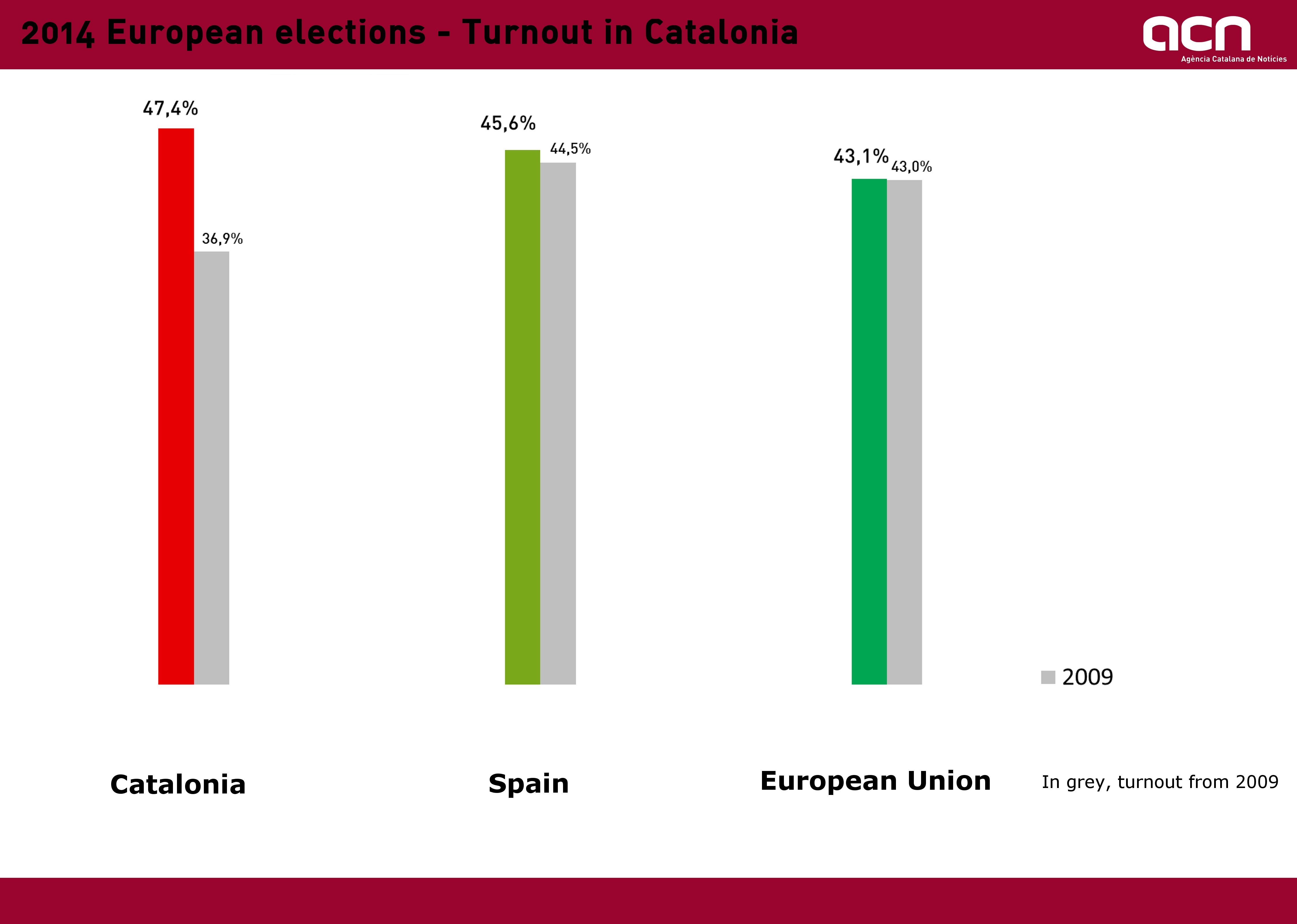Turnout in Catalonia grows from 36.9% to 47.4%, spurred by self-determination debate
In Spain as a whole, turnout for the European parliamentary elections increased slightly, while it increased considerably in a Catalonia in the midst of the independence debate. In 2009 only 36.94% of those Catalans on the voting register voted in the European elections, the lowest turnout ever recorded in any election during the 37 years of democracy. Now, some 47.4% of Catalans have cast their vote, an increase of more than 10 percentage points. In the whole of Spain, turnout increased by only one percentage point when compared to the 44.5% turnout from 2009, reaching 45.6%, sustained by the high increase in Catalonia. In fact, in the rest of Spain, turnout decreased in almost all regions, with only a few exceptions. Turnout also stagnated at EU level, going from 43% in 2009 to 43.1% in the newest elections. Parties and civil society organisations supporting self-determination asked Catalan citizens to vote in these elections in order to send a message to the world: Catalans want to hold an independence vote and to remain within the EU.

Barcelona (ACN).- Turnout in the European parliamentary elections in the whole of Spain has increased slightly, while a huge increased occurred in Catalonia, which is in the midst of a debate over independence. In 2009, only 36.94% of Catalan citizens voted in the European elections, the lowest turnout ever registered in any election during the 37 years of democracy. Now, some 47.4% of Catalans have cast their vote, an increase of more than 10 percentage points. In Spain overall, turnout increased by only one percentage point this 25th of May when compared to the 44.5% from 2009, reaching 45.6%, a figure sustained by the high increase in Catalonia. In fact, in the rest of Spain, turnout decreased in almost all regions, with only a few exceptions. Turnout also stagnated at EU level, going from 43% in 2009 to 43.1% these elections. Political parties and civil society organisations supporting Catalonia's self-determination asked citizens to vote in these elections in order to send a message to the European Union institutions, Member State governments – including that of Spain – and the international community: Catalans want to hold an independence vote and to remain within the EU.
As expected, turnout in Catalonia will be one of the major stories of these European elections, at least at Spanish level. After the poor turnout (39.8%) in 2004, and the extremely poor 36.94% turnout last time around, now in 2014 turnout has grown to 47.4% in Catalonia. This represents a 28.3% increase, although it is still below the 50% milestone. The turnout increase in Catalonia comes after political parties and grass-roots organisations supporting self-determination asked voters during the last week to get involved in these elections in order to send a strong message to Europe. A message carrying three ideas: Catalans support the European integration project; Catalans want to remain in the EU if they become independent; and Catalans want to hold a free and democratic self-determination vote.
Catalonia's turnout is higher than the Spanish and European average
For the first time in many years, Catalonia's turnout at these European parliamentary elections is higher than the Spanish average. In 2009, the Spanish average was 44.5% and that of Catalonia 36.9%. Now, things have shifted and Catalonia's turnout is 47.4% while the Spanish average is 45.6%. As well as this, Catalonia's turnout is higher than the 43.1% European average.
Looking at turnout results throughout the EU, abstention is once again very high in Eastern and Central Europe. Slovakia holds the lowest turnout record, with a dire 13%. This is in strong contrast to the 90% turnouts in Belgium and Luxembourg, although voting is mandatory in these two countries. In Member States such as the UK and the Netherlands, turnout was 36% and 37% respectively.